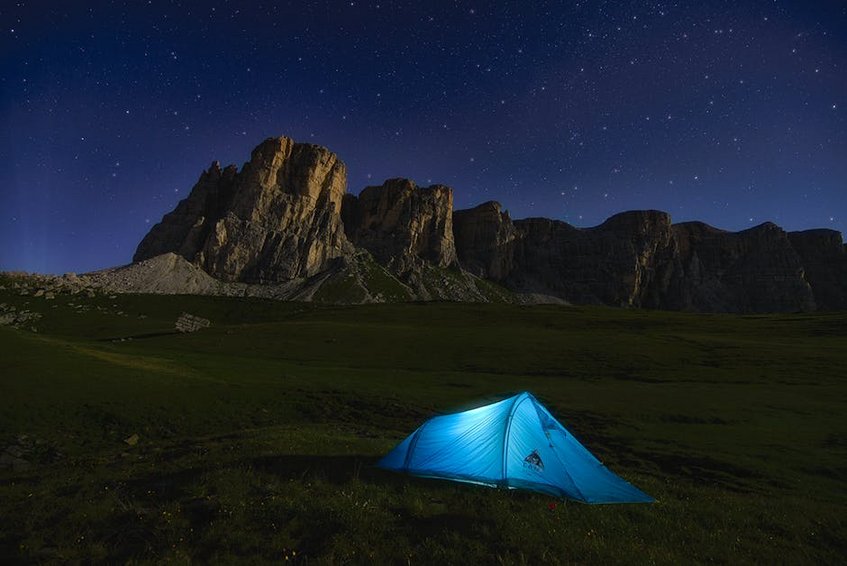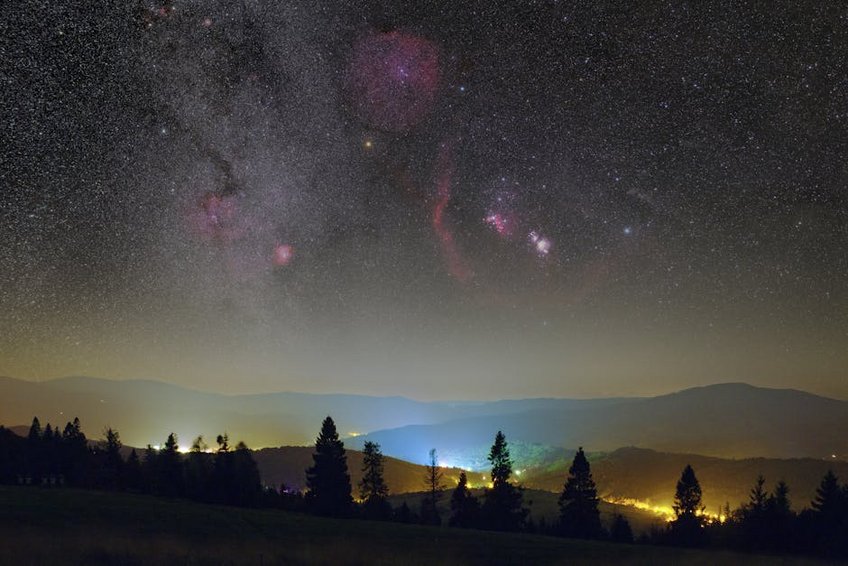Star Gazing in Sleep Camps
Imagine lying under a blanket of countless twinkling stars, far from the light pollution of cities, with nothing but the gentle sounds of nature around you. Star gazing in sleep camps offers one of the most magical and immersive travel experiences available today. This unique combination of outdoor accommodation and celestial observation allows you to connect with the universe in ways you never thought possible. Whether you’re an astronomy enthusiast or simply seeking a peaceful retreat, sleep camps provide the perfect setting for unforgettable nights under the stars. The experience of star gazing in sleep camps blends adventure with tranquility, offering both educational opportunities and profound moments of personal reflection. You’ll discover why this growing travel trend captivates so many people seeking authentic connections with nature and the cosmos.
Star Gazing in Sleep Camps – Essential Information
Before embarking on your celestial adventure, it’s important to understand what exactly star gazing in sleep camps entails. These specialized campsites are strategically located in areas with minimal light pollution, often in remote natural settings that offer crystal-clear views of the night sky. Unlike traditional camping, sleep camps typically provide comfortable bedding options ranging from luxury tents to simple sleeping pads, all arranged to optimize your stargazing experience. Many camps offer astronomy equipment rentals, guided constellation tours, and educational sessions about the night sky. The combination of comfortable outdoor accommodation and professional astronomical guidance makes star gazing in sleep camps accessible to both beginners and experienced astronomers alike. You’ll find that these camps prioritize both comfort and celestial observation, creating a perfect balance between adventure and relaxation.
What Makes Sleep Camps Special for Stargazing
- Strategic locations in Dark Sky Parks and remote areas with virtually zero light pollution
- Specialized equipment available including telescopes, star charts, and astronomy apps
- Expert guides who provide educational tours and help identify constellations and planets
- Budget options: $50-100 per night for basic tent camping with shared facilities and self-guided stargazing
- Mid-range experiences: $150-300 per night including comfortable accommodations, equipment rental, and guided tours
- Luxury packages: $400-800+ per night featuring premium glamping, gourmet meals, private guides, and photography workshops
- International Dark-Sky Association official website
- US News Travel stargazing destinations guide
Different Types of Sleep Camp Experiences
Sleep camps come in various forms to suit different preferences and comfort levels. Some offer luxurious glamping experiences with comfortable beds, electricity, and private facilities, while others provide more rustic accommodations for those seeking a truly authentic outdoor experience. There are family-friendly camps with activities designed for children, romantic couples’ retreats with private viewing areas, and photography-focused camps with equipment for capturing the night sky. The duration of stays can range from single overnight experiences to week-long astronomy immersion programs. Regardless of the format, all quality sleep camps share the common goal of providing exceptional star gazing opportunities combined with comfortable outdoor accommodation.

Star Gazing in Sleep Camps – Planning Your Trip
Proper planning is essential for maximizing your star gazing in sleep camps experience. The best camps often book months in advance, especially during peak meteor shower seasons and astronomical events. You’ll want to consider factors such as weather patterns, lunar phases, and seasonal celestial events when scheduling your trip. New moon periods offer the darkest skies and best viewing conditions, while full moons provide beautiful landscape illumination but can diminish star visibility. Many camps operate seasonally, with summer months offering warmer temperatures but potentially more atmospheric haze, while winter months provide crystal-clear skies but colder conditions. Researching camp amenities, available equipment, and guide qualifications will help ensure you choose the experience that best matches your expectations and comfort level.
Best Time to Visit Star Gazing Sleep Camps
The ideal time for star gazing in sleep camps depends on your celestial interests and weather preferences. Summer months (June-August) offer warmer temperatures and the spectacular Milky Way core visibility, making them popular for family trips. Autumn (September-November) provides comfortable temperatures and excellent viewing conditions with generally clear skies. Winter (December-February) offers the longest nights and crisp, clear atmospheric conditions perfect for deep-sky observation, though temperatures can be challenging. Spring (March-May) brings milder weather and opportunities to observe different constellations and planetary alignments. Major meteor showers like the Perseids (August) and Geminids (December) create particularly magical experiences, though these peak periods require early booking.
Budget Planning and Costs for Sleep Camp Stargazing
Essential Preparation Checklist
Proper preparation significantly enhances your star gazing in sleep camps experience. Pack appropriate clothing using the layering system, including thermal base layers, insulating mid-layers, and weather-resistant outer shells. Even summer nights can become surprisingly cold in remote locations. Bring red-light flashlights to preserve night vision, extra batteries, and portable power banks for devices. Consider downloading astronomy apps beforehand since many remote locations lack reliable internet connectivity. Pack binoculars if you have them, though most camps provide telescope access. Don’t forget personal comfort items like insulated sleeping bags, camping pillows, and snacks. Check with your camp about provided amenities to avoid overpacking while ensuring you have everything needed for comfort and optimal stargazing.
Star Gazing in Sleep Camps – Top Attractions and Activities
The primary attraction of star gazing in sleep camps is obviously the night sky itself, but these experiences offer much more than simply looking upward. Many camps provide structured activities that enhance your astronomical understanding and appreciation. Guided constellation tours help you navigate the celestial sphere while learning the mythology and science behind star patterns. Telescope sessions allow detailed observation of planets, galaxies, nebulae, and star clusters that are invisible to the naked eye. Astrophotography workshops teach techniques for capturing stunning images of the night sky. Daytime activities often include nature hikes, wildlife observation, and educational sessions about light pollution and conservation. The combination of celestial observation and natural immersion creates a comprehensive experience that connects you to both the cosmos and the earthly environment beneath your feet.
Must-See Celestial Highlights
Certain astronomical phenomena make star gazing in sleep camps particularly spectacular. The Milky Way galaxy appears as a breathtaking band of light stretching across the sky, with its core region visible during summer months. Meteor showers like the Perseids and Geminids create natural fireworks displays with dozens of shooting stars per hour at their peaks. Planetary observations allow you to see Jupiter’s moons, Saturn’s rings, and Martian surface features through telescopes. The International Space Station frequently passes overhead as a bright, fast-moving star. Lunar observations reveal incredible detail during partial phases when shadows emphasize crater rims and mountain ranges. Many camps schedule activities around these events, ensuring you experience the most impressive celestial displays during your visit.
Hidden Gems and Local Favorites
Beyond the major astronomical attractions, star gazing in sleep camps offers numerous lesser-known delights that experienced astronomers particularly appreciate. Nocturnal wildlife often becomes active after dark, with opportunities to hear and sometimes see creatures that remain hidden during daylight hours. Atmospheric phenomena like zodiacal light (a faint glow extending from the horizon) and airglow (subtle atmospheric luminescence) create magical visual effects. Satellite tracking becomes a fascinating pastime once you learn to distinguish artificial satellites from natural celestial objects. Many camps have local astronomical lore and stories about particular stars or constellations that add cultural depth to the scientific experience. These subtle elements combine to create a rich, multi-layered adventure that goes far beyond simple stargazing.
Star Gazing in Sleep Camps – Practical Travel Information
Understanding the practical aspects of star gazing in sleep camps ensures a smooth and enjoyable experience. Most quality camps are located in designated Dark Sky Parks or remote wilderness areas, which means transportation planning is crucial. Many provide detailed directions emphasizing that GPS systems often fail in remote locations. Cell service is typically limited or nonexistent, so downloading maps and information beforehand is essential. Camps vary in their amenity levels from primitive sites with compost toilets to luxury facilities with full bathrooms and electricity. Meal options range from self-catering to gourmet dining experiences. Understanding what your specific camp provides versus what you need to bring will prevent surprises and ensure you’re properly prepared for both comfort and celestial observation.
| Accommodation Type | Features and Amenities | Price Range (USD per night) |
|---|---|---|
| Basic Camping | Bring your own tent, shared facilities, self-guided | $50-100 |
| Comfort Camping | Provided tent, comfortable bedding, shared facilities | $120-200 |
| Glamping Luxury | Premium tents, private facilities, electricity | $250-400 |
| Full Experience | Luxury accommodation, gourmet meals, private guides | $450-800+ |


